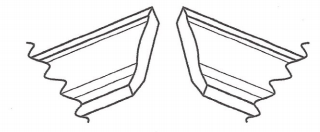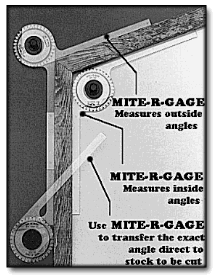With MITE-R-GAGE you can:
Layout Angles
Layout angles refer to the orientation or positioning of elements within a design or layout. These angles can influence the visual flow, readability, and overall aesthetics of a page or interface. By adjusting the angles, designers can create dynamic compositions that guide the viewer's attention or evoke specific emotions.
Measure inside angles
Inside angles, also known as interior angles, are the angles formed within a polygon by its sides. These angles are crucial in geometry for understanding the properties of various shapes. The sum of the interior angles of a polygon depends on the number of sides it has.
Measure outside angles
Exterior angles, also known as outside angles, are the angles formed between one side of a polygon and the extension of an adjacent side. A key property of exterior angles is that, for any polygon
Check corners for squareness and surface for flatness
Checking corners for squareness involves ensuring that the angles between two edges are exactly 90 degrees, typically using a square tool
Check alignment of radial or table saw
Checking the alignment of a radial or table saw ensures accurate cuts and smooth operation. This can be done by verifying that the blade is parallel to the fence and perpendicular to the tabletop.
Calibrate leveling tools to indicate slope in degrees
Calibrating leveling tools to indicate slope in degrees involves adjusting the tool to ensure it provides accurate readings. This can be done by setting the tool
Make simple or compound miter cuts
Making simple or compound miter cuts requires careful measurement and setup. For simple miter cuts, adjust the saw's angle to the desired degree and make the cut along the edge of the material.
HOW TO USE MITE-R-GAGE
• Place Mite-R-Gage into/over corner
• Read cutting angle
• Example: 43 degrees
• Set saw blade angle to 43 degrees*
• Get perfect cut and fit!
• Full angle can also be read directly from Mite-R-Gage
CROWN MOLDING INSTRUCTIONS USING MITER SAW
Get Your Effective Carpentry Tool

Guaranteed not to break, crack or warp under normal usage
Guaranteed to resist breaking, cracking, or warping under normal usage.


